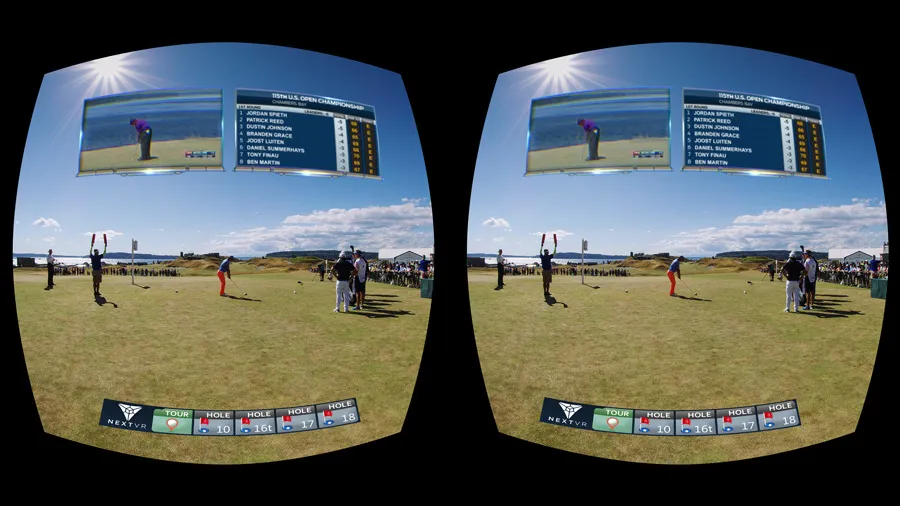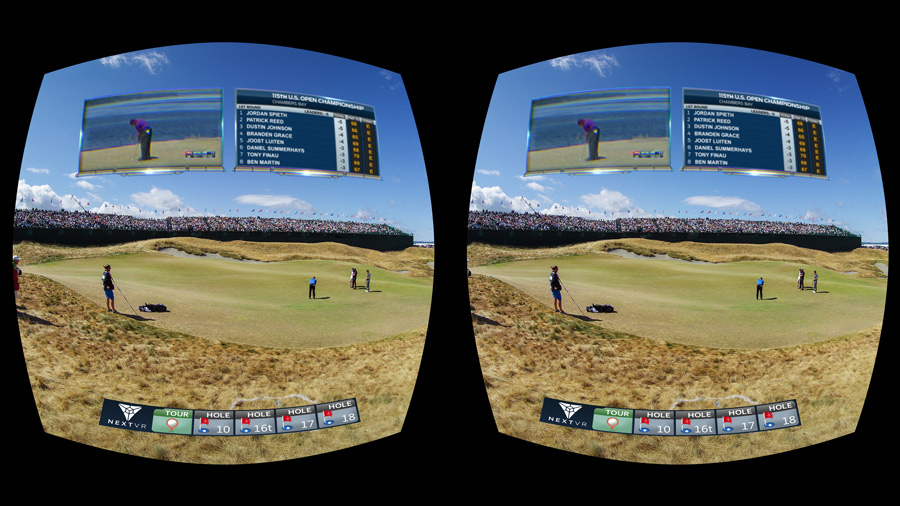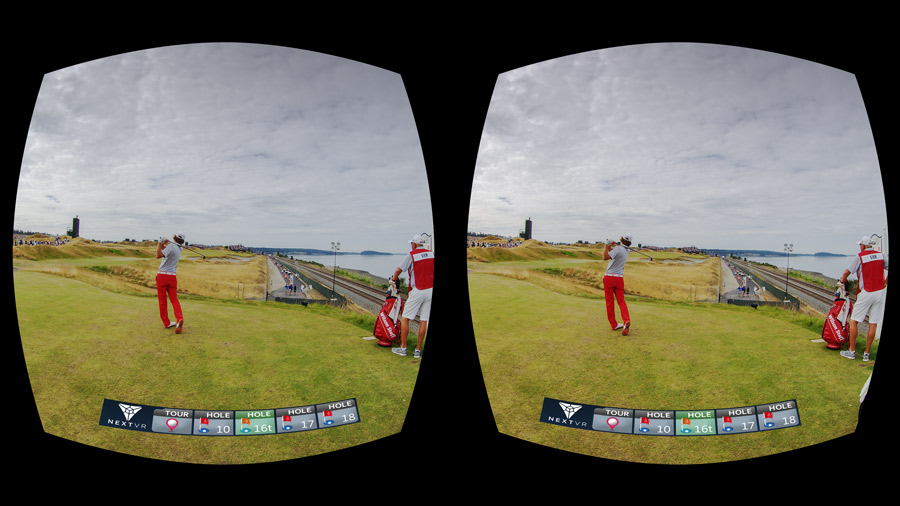This year millions tuned in to watch Jordan Spieth win his second major of the year at the US Open, broadcast for the first time ever on Fox. The broadcast itself has drawn a bit of controversy from golf traditionalists for breaking the mold with some NFL inspired markings on the course and a number of other little technological tweaks meant to target a younger audience. This year’s broadcast may not have drawn the ravest of reviews, but behind the scenes there was another, more private broadcast of the US Open that had me and around 500 VIPs pretty pumped – the first ever multi-camera live broadcast in VR.
The broadcast, done in partnership with Fox Sports and NextVR, was an ambitious effort to demonstrate the future of sports broadcasting in VR. I had a chance to watch it myself after E3 with NextVR’s co-founder Dave Cole and it was quite impressive.
Strapping on a GearVR, I found myself standing by the green at Chambers Bay – watching one of the many putters miss an easy one on one of the awfully kempt greens. Standing about 30 feet away from the action, I could feel the crowd groan in front of me as the putt drizzled left of the cup but more importantly, I was able to see the ball dizzle to the left of the cup.
The broadcast – which was being downconverted from 6K (due to the limitations of the GearVR) looks incredible. Close to the cameras, players expressions are visible and the picture is clear enough to see the ball as it travels through the air. Obviously the images were still limited by the display hardware itself, so it may be a step too far down in that respect for the average fan, but display hardware is iterating at an ever increasing pace.
Perhaps the biggest leap for me was how great the 3D looked. NextVR has spent copious amount of time and effort into it’s camera technology, continuously iterating and improving on it – including some really interesting experimentations with positional tracking (if you haven’t – take a moment to read Ryan Damm’s fantastic breakdown of NextVR’s camera technology).
For this broadcast, NextVR was able to leave the cameras on the course for a full day before the action was underway, which allowed them to pre-bake in a lot of the geometric data from the course. This allowed them to have a really great mesh on which the video was laid, producing some of the most convincing live action 3D scenes I have seen. One hole in particular was shot from an angle that really emphasized the hilly nature of the course, capturing overlapping hills running along the fairway. These points of reference really helped to make the 3D feel more realistic.
It wasn’t the landscape alone either – the people who populated it shared a similar depth. It was all very convincing even though it was still far from perfection.
What was more exciting though than the visuals was the completeness of the broadcast. This wasn’t some small tech demo, it was a full on undertaking. NextVR brought five simultaneous feeds to the table, which were selectable using an app on the GearVR. Those feeds also included real time integration of some broadcast elements like commentary (not per hole, however, for this demo), player information, and ball tracking cameras. For example, after a player hits their shot off the tee, a ball tracking camera view can be overlayed on the scene, allowing you to see the flight of the ball just like you would on the standard broadcast. It is just one of the many ‘augmented virtual reality’ elements the team is working to bring to the table.
Like a number of the other broadcasts that NextVR has done, the US Open was streamed in 180-degrees rather than the full 360. This is done for a number of reasons – but one of the most compelling is that it allows the use of the real estate behind the viewer for things like stats and of course – a leaderboard.
Dave told me that in the future the features behind the viewer would be interactable and would also be able to be moved dynamically over the action when the viewer wanted them – snapping back behind the head when they were dismissed. This feature helps to integrate second screen viewing into the VR experience – something that will prove vital for keeping people immersed in the game. Dave also mentioned that they were considering some social features like Twitter integration in the future as well.
As a sports fan, seeing this glimpse into the future of live sports broadcasting was incredibly exciting. I have seen many times before the work that NextVR and others have done with sports, but never before has it truly felt like a broadcast. It’s an early look, but NextVR’s US Open coverage is the closest thing I have seen to achieving a full professional broadcast in VR.
According to the company, the US Open highlights will be available to download and stream through NextVR’s upcoming app “NextVR Portal” which will be available on every major virtual reality device, including Oculus, the HTC Vive, the Sony Morpheus, and of course on the GearVR. No word yet as to when the portal will be available to download.































